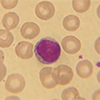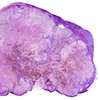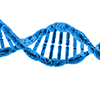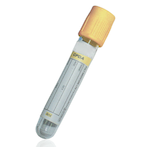Free Triodothyronine (FT3)
Specimen Volume
1 mL blood (minimum sample volume 100 uL)Specimen Transport
Ambient temperatureSample Preparation
Centrifuge
Turnaround Time
1 daySample Processing In Laboratory
Usual
Sample Stability
Store at 4 ºC for up to seven days. For longer periods store at -20 ºC.
General Information
Tri-iodothyronine (T3) constitutes approximately 5% of the thyroid hormones in serum. T3 is produced by both the thyroid gland and mono-deiodination of Thyroxine.
(T4) in the peripheral tissues. It is primarily transported by carrier proteins: thyroid binding globulin (TBG), albumin and pre-albumin. T3 has greater metabolic activity than T4, has a shorter half-life and less affinity for TBG. Only about 0.5% of T3 circulates freely in the serum and is considered the biologically active fraction. This is FT3, the measurement of which is is useful in the diagnosis of hyperthyroidism. FT3 measurement has practical importance in thyrotoxic patients (T3 toxicosis) who exhibit elevated FT3 levels while maintaining normal FT4 concentrations.
Free T3 plays an important role in maintenance of the euthyroid state and assists in the diagnosis of thyroid dysfunction. Unlike total T3, free T3 is largely unaffected by variations in thyroid hormone-binding protein levels. Euthyroid patients with elevated concentrations of TBG, as in pregnancy, use of oral contraceptives and estrogen therapy exhibit an increase in total T3 concentrations but not FT3. Euthyroid patients with very low levels of TBG exhibit subnormal levels of total T3 while free T3 concentrations remain essentially “normal”.
Patient Preparation
Patients receiving therapy with biotin (> 5mg/day) should not have samples taken for analysis until at least 8 hours post dose. Any influence that might affect the binding behaviour of the binding proteins can alter the result of the fT3 tests (e.g. drugs, NTIs (Non‑Thyroid‑Illness) or patients suffering from FDH (Familial Dysalbuminemic Hyperthyroxinemia).
Notes
FT3 is measured using an electrochemiluminescence sandwich immunoassay. Any influence that might affect the binding behaviour of the binding proteins can alter the result of the fT3 tests (e.g. drugs, NTIs (Non‑Thyroid‑Illness) or patients suffering from FDH (Familial Dysalbuminemic Hyperthyroxinemia). Fractionated or unfractionated heparin may produce artefactual elevation in measured concentrations of free thyroid hormones. In rare cases, interference due to extremely high titers of antibodies to analyte or to analyte‑specific antibodies, streptavidin or ruthenium can occur. Please contact the laboratory for further advice if tests results are not consistent with the patient's medical history, clinical presentation and/or other findings, as further interference studies can be performed.
Reference Range
Adult reference range = 2.6 - 5.7 pmol/L
Source of Reference Range
Abbott DiagnosticsSpecifications
-
EQA Status:
NEQAS
- EQAS Scheme: Yes








